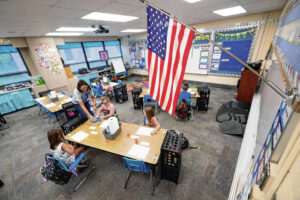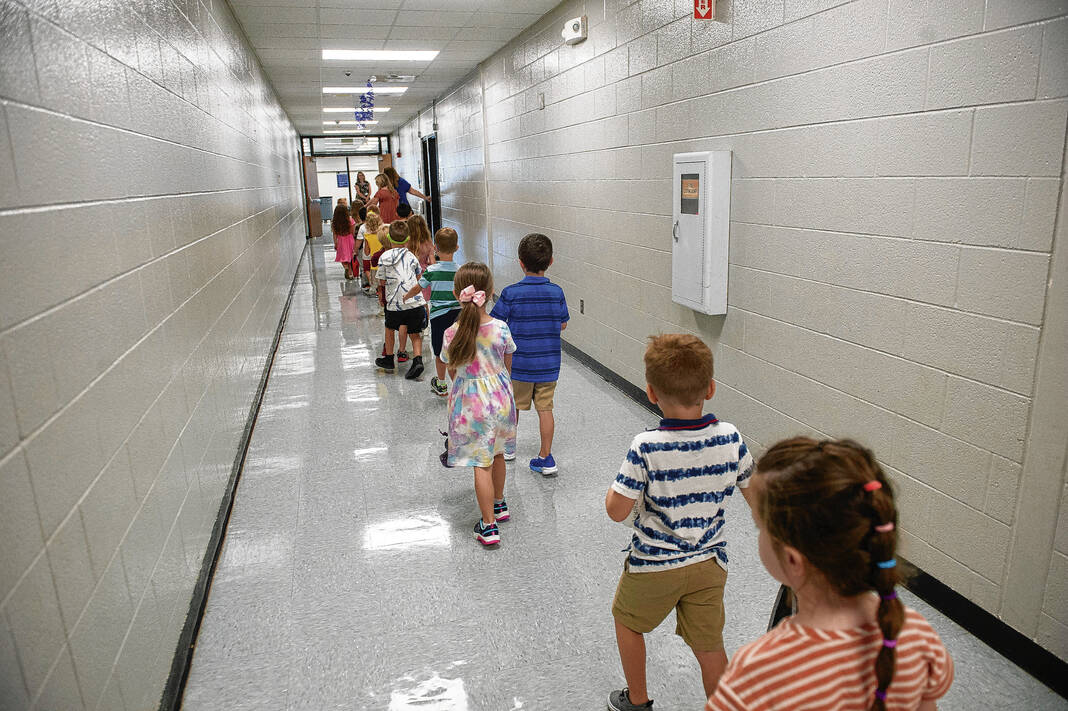HANCOCK COUNTY — Dan Walker is a firefighter with the Indianapolis Fire Department. Far too often he’s been called to homes to deal with traumatic situations where young children and teenagers have to experience difficult situations involving police and other first responders.
As a way to help children who have gone through traumatic experiences, law enforcement in Hancock County is working with the school districts to start a Handle With Care program Monday, Oct. 17.
The program will provide local students’ schools with a “heads up” when a child has been identified at the scene of a potentially traumatic event. It could be a fire explosion, a domestic violence situation, a shooting in the neighborhood, witnessing a malicious wounding, a drug raid at the home, etc.
For Walker, New Palestine, who in addition to being a first responder is also the Southern Hancock school board president, he knows the “Handle with Care” initiative will help local youth. He said the program allows adults at the child’s school to look out for students who are going through a tough situation.
“Being a firefighter in Indianapolis we see lots of kids who have to experience some pretty awful stuff,” Walker said. “It could be a fire, a car accident or domestic violence and we have a responsibility to not only educate the kids academically, but care for them mentally and emotionally as well.”
For years, Hancock County Sheriff Brad Burkhart has wanted the county to be part of a program where law enforcement can alert local school officials to let them know when a student has gone through something traumatic.

While officials won’t inform district officials the details of what the child has gone through, administrators and educations will get alerts telling them to “Handle with Care” the student. Hancock County will be one of a handful of counties in the state to have the program.
“I’ve been to many, many calls where children are present,” Burkhart said. “In many cases, we deal with the call when children are there, and when we’re done many kids are left in limbo with how to handle it.”
Research shows that prolonged exposure to violence and trauma can seriously undermine children’s ability to focus, behave appropriately and learn. It often leads to school failure, truancy, suspension or expulsion, dropping out, or involvement in the juvenile justice system.
Burkhart noted children and teens process trauma differently than adults and therefore sometimes need some time to understand an encounter with law enforcement or a first responder.
“Anytime law enforcement or even fire assistance is called to a scene, that could be a traumatic situation to a child, so we want to give school officials notice to keep an eye on the student,” Burkhart said.
They’ll start the program allowing law enforcement officers to reach-out and send the emails to administrators at county schools. Burkhart said they plan to work county firefighters into the notification process as well.
“There is not cost to this at all. It’s basically our officers and eventually fire personnel recognizing a situation and them sending out an email to the school in a special platform,” Burkhart said.
For now, the program will be implemented in all county public schools with the hope of getting it installed at the private schools as well.
Terry Miller, a social worker for Greenfield-Central schools, likes the collaborative effort between law enforcement and the county schools helping students who may be traumatized or who may just have a tough time the next day following an event involving law enforcement.
They’ll have a point of contact at each Greenfield-Central building. When a student has been involved in an event involving law enforcement, including such things as the arrest of a parent, a car accident, domestic violence, a break-in at their home, etc., the officer involved will send a “Handle with Care” message to the school the student attends.
“The only information included in that email will be the student’s name, age, and the phrase ‘Handle with Care,’” Miller said.
The point person at the school will then notify the student’s teacher(s) and other staff members on a need-to-know basis that something has occurred which may affect a student that day.
“This alert will give the teacher a heads-up before the student walks in the school that day,” Miller said. “We will realize that each child will react to events differently … some may come to school as if nothing happened and others will show increased distress.”
The teacher will be able to provide extra compassion, time, and other physical needed items that may be required that day. Teachers will not ask any questions of the student about what happened nor will they call the home.
“If services above what can be provided in the classroom are needed, the school social worker or counselor will provide those services,” Miller said.
By implementing the program in Hancock County, district officials and law enforcement hope to give children an added dose of resilience.
“We can provide that extra layer of compassion and assistance to them,” Miller said.
Katy Eastes, curriculum director for Southern Hancock schools, said when a student has to go through an abnormal situation the night before school, it’s going to more than likely affect them the next day and many will need some kind of support.
“We try to handle all kids with care, but for those who have gone through a difficult situation or have had police at their home or at a location, they need something extra,” Eastes said. “It’s not our business what they’ve been through, but a notification will say, ‘Handle with Care’ and we’ll know they may need a little special attention.”
That attention could be showing grace on missing a homework assignment, providing a place to get some rest, a solid meal, or a clean shirt or any many cases just a smile to let them know someone is there who cares.
“If that care we can provide right there in the classroom isn’t enough, there may be a referral to a social worker or school counselor,” Eastes said.





